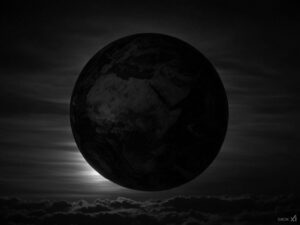
In the vast silence of space, a cataclysmic event unfolded. A massive star, nestled in a distant corner of the galaxy, reached the end of its life and erupted into a supernova. The explosion was so immense that its shockwaves rippled through the cosmos, sending waves of energy and radiation across light-years. Remarkably, this stellar event occurred closer to our solar system than any other recorded in human history, and its effects on the sun were both immediate and profound.
The first signs of the supernova’s impact were subtle yet unsettling. Ever vigilant, astronomers noticed an unusual fluctuation in the sun’s energy output. Our steadfast star began to dim, its radiant glow waning like a flickering candle. Within days, the phenomenon became visible to the naked eye. The skies, once bright and blue, took on a muted, somber hue. The world was plunged into a twilight that persisted even at noon, casting long shadows and chilling the Earth.
Panic spread as scientists scrambled to understand the implications of the sun’s diminished energy. The supernova’s shockwave had disrupted the sun’s fusion processes, reducing its output by nearly 20%. This unprecedented change threatened to alter the very fabric of life on Earth. Temperatures plummeted, and the planet experienced a swift and brutal cooling. Crops withered in the fields, unprepared for the sudden frost, and ecosystems began to falter. The once-reliable cycles of nature were thrown into chaos.

In the midst of this crisis, humanity was forced to adapt. Governments and scientists from around the globe convened emergency summits, seeking solutions to stave off a new ice age. The immediate challenge was to preserve food supplies and maintain warmth. Greenhouses were hastily constructed, powered by artificial lights to mimic the absent sun. Cities turned to alternative energy sources, harnessing geothermal and nuclear power to keep the lights on and the heaters running.
As the world grappled with the sun’s diminished glow, a remarkable transformation began to take place. The crisis, though dire, sparked an unprecedented wave of innovation and cooperation. Nations that had once been at odds found common ground in their shared struggle for survival. Borders became less significant as resources and knowledge flowed freely across them. Scientists, engineers, and thinkers from every corner of the globe collaborated, driven by a singular purpose: to reignite the sun’s fire.
In this new era of unity, humanity’s ingenuity shone brightly. A team of international scientists proposed a daring plan to restore the sun’s energy output. They theorized that by deploying a fleet of solar sails—massive reflective structures placed in orbit around the sun—they could capture and redirect the supernova’s residual energy back into the sun, effectively jumpstarting its fusion processes. The plan was ambitious and fraught with risk, but it was humanity’s best hope.
The world watched with bated breath as the solar sails were launched. It was a monumental effort, requiring the combined resources and expertise of every nation. The sails unfurled in the void, their reflective surfaces catching the light of distant stars. Slowly, they began to work their magic, channeling energy back into the sun. Weeks passed, and the sun’s glow gradually intensified. The skies brightened, and warmth returned to the Earth.
The success of the solar sails marked a turning point for humanity. The crisis had revealed both the fragility and the resilience of life on Earth. It had shown that, in the face of existential threats, unity and cooperation could achieve the seemingly impossible. As the sun blazed once more, humanity emerged from the ordeal wiser and more connected than ever before.
In the aftermath of the supernova’s impact, the world was forever changed. The lessons learned during those dark days became the foundation for a new era of global collaboration. The experience forged a sense of shared destiny among the people of Earth, reminding them that they were but a small part of a vast and unpredictable universe. As they looked up at the sky, now bright and blue once more, they knew that together, they could face whatever challenges the cosmos might hold.




